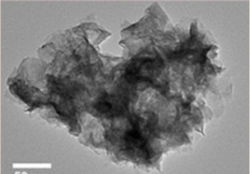

Development of Bio & Electro-active Nanomaterials
Anisotropic Nanomaterials
Synthesis of metal nanoparticles is a major research area in nanoscale science and engineering owing to their unusual chemical and physical properties, such as catalytic activity, novel electronic, optical and magnetic properties and their potential applications in biotechnology. The major objective is to synthesize nanoparticles of different shape and investigate their electrocatalytic, biocatalytic and SERS properties. Gold nanoparticles of flower-shape, prism, periwinkle, and cube; Ag nanopartcles of branched shape and Pd nanoparticles of fractal and garland shapes, Pt nanoparticles of branched shapes have been synthesized in aqueous solution and characterized by various techniques.


Carbon Based Nanomaterials (Graphene, Carbon Nanodots, etc.)
Harnessing the power of carbon for next-generation energy solutions. carbon nanostructures are redefining the future of materials science. Our lab pioneer’s sustainable synthesis routes for these nanomaterials, bridging the gap between green chemistry and high performance. By tuning structure from atomic dots to extended sheets and porous networks, we unlock versatile functionality from 0D to 3D.
 |  |  |
|---|---|---|
 |
MXene & MXene composite
Maxenes, a new class of 2D transition metal carbides, nitrides, or carbonitrides, have emerged as game-changers in nanomaterials science. MXene-based composites, including those integrated with carbon, polymers, or metal nanoparticles, demonstrate enhanced stability, selectivity, and multifunctionality.

Metal oxide
Metal oxides are well-known for their stability, tunable band gaps, and redox-active nature, making them vital in energy conversion, catalysis, and sensing. These materials have shown exceptional performance in electrocatalysis (HER, OER, ORR), batteries, supercapacitors, and environmental remediation. Our research focuses on innovative synthesis routes and nanostructuring of metal oxides to push the boundaries of sustainable and high-performance materials.
 |  |  |
|---|---|---|
 |  |
Metal phosphides/ Sulphides/ selenides
Metal phosphides have emerged as powerful candidates for next-generation electrocatalysts, especially in hydrogen and oxygen evolution reactions (HER & OER). Our research explores tailored synthesis of mono- and Mult metallic phosphides for efficient, low-cost, and durable electrochemical energy applications.
 |  |  |
|---|---|---|
 |
Metal Phosphonates
Metal phosphonates are hybrid materials formed by the coordination of metal ions with phosphonic acid groups, offering high thermal stability, tunable porosity, and rich structural diversity. With both organic and inorganic characteristics, metal phosphonates serve as excellent platforms for functional nanomaterials and electrochemical devices.
 |  |  |
|---|---|---|
 |  |
Metal composite
Metal composites combine the strengths of metals with other materials (like carbon, oxides, or polymers) to create synergistic properties far beyond individual components.
 |  |  |
|---|---|---|
 |  |
Metal complexes
Metal complexes, formed by coordinating metal ions with organic or inorganic ligands, offer precise tunability of electronic and structural properties.
Noble Materials
Noble materials, such as gold, platinum, palladium, and ruthenium, are renowned for their exceptional chemical stability, high conductivity, and outstanding catalytic activity. Our work focuses on minimizing noble metal content through atomic-level engineering to achieve cost-effective, high-performance catalysts.

Metal Based Nanomaterials (Metal oxides/chalcogenides/Phosphides)
The selection of the good and efficient electrode materials is very much essential for energy conversion, storage, electrocatalytic and bi-catalytic applications. Therefore, for substantial efforts have carried to explore new materials of comparable efficiency. Here we developed the new synthesis methods for syntheses of variety of Transition Metal based 0D, 2D and 3D nanomaterials such as MoS2 Quantum Dots(QDs), MOFs, NiSe2, MoS2, Nickel Phosphides, Co2P, FeOOH, ZnO, MoO2, VO2, CuWO4, transition metal oxide Calcium Cobaltite, Cu2O, NiCo2O4, β-NiMoO4, Cu3P, ZnCo2O4 and etc.
 8 |  1 |
|---|---|
 6 |  2 |
 4 |  5 |
 7 |  3 |
Hybrids/Composites Nanomaterials
To improve the catalytic performance, the nanostructured catalyst requires supporting material with high conductivity and large surface area. It not only enhances the catalytic activity but also provides stability by preventing the extensive aggregation of nanoparticles. We made our effort to develop variety of hybrids/composites of nanomaterials on graphene, SnO2 or mesoporosus silca with Noble metals, Metal oxides based materials for their synergistic promising applications of interest. For examples, Graphene hybrids of Graphene-(Mn3O4, Pt, Pd, Au/Pd, Au@Pd, Porous Pd, Au@Porous Pd, Vo2D, MoS2, NiCo2O4, ZnCo2O4, Ag nanowires) Pt-SnO2, AgNPs-Mesoporous silica, Au-ZnO and etc.












Representive Publications
-
B. Mohanty, Y, Wei, M. Ghorbani-Asl, P. Rajput A. V. Krasheninnikov, Bikash Kumar Jena* “Revealing the defect-dominated oxygen evolution activity of hematene” J. Mater. Chem. A 2020, 8, 6709-6716
-
S. Mondal, B Mohanty, M. Nurhuda, S. Dalapati, M. Addicoat, Bikash Kumar Jena,* Asim Bhaumik* “Thiadiazole Based Covalent Organic Framework: Metal-free Electrocatalyst towards Oxygen Evolution Reaction” ACS Catalysis 2020, 10, 5623–5630.
-
S, K. Das, S. C. Sahu, A. Ghosh, S. Basu, B. Chakraborty, and Bikash Kumar Jena* “The experimental and theoretical insights towards the CO induced Pd-Graphene and their multifunctional energy conversion applications” Carbon 2019, 149, 307-317.
-
S. Kamila, B. Chakraborty, S. Basu, Bikash Kumar Jena* “Combined Experimental and Theoretical Insights into Energy Storage Applications of a VO2(D)–Graphene Hybrid” J. Phys. Chem. C 2019, 123, 24280-24288.
-
U. Kayal, B. Mohanty, P. Bhanja, D. Chandra, M. Hara, Bikash Kumar Jena* and Asim Bhaumik “Ag NPs decorated ordered mesoporous silica as an efficient electrocatalyst for alkaline water oxidation reaction” Dalton Transactions 2019, 48, 2220-2227.
-
A. Dutta, S. Mutyala, A. K. Samantara, S. Bera, Bikas Kumar Jena* and Narayan Pradhan* Synergistic Effect of Inactive Iron Oxide Core on Active Nickel Phosphide Shell for Unprecedented Enhancement in the OER Activity ACS Energy Lett. 2018, 3, 141−148.
-
A. K. Samantara, S. Kamila, A. Ghosh, Bikash Kumar Jena*, “Highly Ordered 1D NiCo2O4 Nanorods on Graphene: An Efficient Dual-functional Hybrid Materials for Electrochemical Energy Conversion and Storage Applications” Electrochimica Acta, 2018, 264, 147-157.
-
B. Mohanty, M. Ghorbani-Asl, S. Kretschmer, A. Ghosh, P. Guha, S. K. Panda, B. Jena, A. V. Krasheninnikov, Bikash Kumar Jena* “MoS2 Quantum Dots as an Efficient Catalyst Material for Oxygen Evolution Reaction” ACS Catalysis 2018, 8, 1683−1689.
-
S. Ratha, A. K. Samantara, K. K. Sinha, A. S. Gangan, B. Chakraborty, Bikash Kumar Jena,* C. S. Rout “Urea-assisted Room Temperature Stabilized Metastable β-NiMoO4: Experimental and Theoretical Insights into its Unique Bi-functional Activity towards Oxygen Evolution and Supercapacitor” ACS Appl. Mater. Interfaces, 2017, 9, 9640-9653.
-
S. Kamila, B. Mohanty, A. K. Samantara, P. Guha, A. Ghosh, B. L. Jena, P. V. Satyam, B. K. Mishra, Bikash Kumar Jena* “Highly Active 2D Layered MoS2-rGO Hybrids for Energy Conversion and Storage Applications” Scientific Reports, 2017, 7, 8378.
-
A. Ghosh, P. Guha, A. K. Samantara, Bikash Kumar Jena, R. Bar, S. Ray and P. V. Satyam “Simple growth of faceted Au-ZnO hetero-nanostructures on silicon substrates (Nanowires and Triangular Nanoflakes): A shape and defect driven enhanced photocatalytic performance under visible light” ACS Applied Materials & Interfaces 2015, 7, 9486–9496.
-
A. K. Samantara, S. C. Sahu, A. Ghosh and Bikash Kumar Jena* “Sandwiched graphene with nitrogen, sulphur co-doped CQDs: an efficient metal-free material for energy storage and conversion applications” J. Mater. Chem. A, 2015, 3, 16961–16970.
-
S. C. Sahu, B. Satpati, L. Besra and Bikash Kumar Jena* “A Bifunctional Nanoelectrocatalyst Based on Flower-like Au/Pd Bimetallic Alloy Nanostructure and Its Graphene Hybrid” ChemCatChem, 2015, 7,4042–4049.
-
Subash Chandra Sahu, Aneeya K. Samantara, Ajit Dash, R. R. Juluri, R. K. Sahu, B. K. Mishra, and Bikash Kumar Jena* “Graphene induced Pd nanodendrites: A highly performance hybrid nanoelectrocatalyst” Nano Research, 2013, 6, 635-643.
-
Subash Chandra Sahu, Aneeya K. Samantara, Biswarup Satpati, Sarama Bhattacharya and Bikash Kumar Jena,* “A Facile Approach for In Situ Synthesis of Graphene-Branched Pt Hybrid nanostructures with Excellent Electrochemical Performance” Nanoscale 2013, 5, 11265-11274.
-
Subash Chandra Sahu, Aneeya K. Samantara, A. Ghosh and Bikash Kumar Jena,* “A Bio-inspired Approach for Shaping Au Nanostructures: Role of Biomolecule Structure in Shape Evolution” Chemistry-A European Journal, 2013, 19, 8220-8226.
-
Bikash Kumar Jena,* Subash Chandra Sahu, Biswarup Satpati, Ranjan K. Sahu, Debadhyan Behera and Swagatika Mohanty, “A facile approach for morphosynthesis of Pd nanoelectrocatalysts” Chemical communications, 2011, 47, 3796-3798.
-
A. Dutta, A. K. Samantara, S. K. Dutta, Bikash Kumar Jena,* and N. Pradhan “Surface-Oxidized Dicobalt Phosphide Nanoneedles as a Nonprecious, Durable, and Efficient OER Catalyst” ACS Energy Letters. 2016, 1, 169–174.
-
Bikash Kumar Jena and C. Retna Raj* “Seedless, Surfactantless Room Temperature Synthesis of Single Crystalline Fluorescent Gold Nanoflowers with Pronounced SERS and Electrocatalytic Activity Chemistry of Materials, 2008, 20, 3546-3548.
-
Bikash Kumar Jena and C. Retna Raj* “Synthesis of Flower-like Gold Nanoparticles and their Electrocatalytic Activity Towards Oxidation of Methanol and Reduction of Oxygen”, Langmuir 2007, 23, 4064-4070.
-
Bikash Kumar Jena and C. Retna Raj* “Shape Controlled Synthesis of Gold Nanoprism and Nanoperiwinkles with Pronounced Electrocatalytic Activity” Journal of Physical Chemistry C 2007, 111, 15146-15153.
